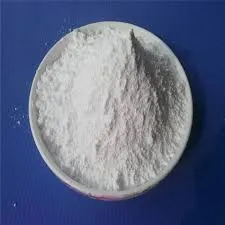Polyacrylamide Flocculant in Water Treatment
Water treatment is a critical process required to ensure that water is safe for human consumption and environmental use. Among the various chemicals utilized in this process, polyacrylamide (PAM) has emerged as a prominent flocculant with a wide range of applications. This article aims to explore the role of polyacrylamide flocculants in water treatment, their benefits, and considerations for their usage.
Polyacrylamide is a synthetic polymer derived from acrylamide monomers. Due to its ability to form a gel-like substance, it has been widely adopted in various fields, particularly in water treatment. In the context of wastewater management, PAM is primarily used to remove suspended solids and enhance the sedimentation process, thus improving the overall quality of treated water.
One of the main advantages of using polyacrylamide as a flocculant is its effectiveness at a relatively low dosage. This characteristic not only helps in minimizing operational costs but also reduces the amount of sludge generated during the treatment process. The polymer works by neutralizing the charges of suspended particulate matter, leading to agglomeration into larger flocs. These larger particles can then be more easily separated from the water via sedimentation or filtration.
Furthermore, PAM flocculants can be amphoteric, meaning they can carry both positive and negative charges, which enables them to interact effectively with different types of contaminants. This versatility makes polyacrylamide suitable for treating a variety of wastewater sources, including municipal, industrial, and agricultural effluents. For instance, in mining operations, PAM aids in the process of removing fine particles and heavy metals from water, thus facilitating environmental compliance and providing cleaner discharge.
polyacrylamide flocculant water treatment

Another important aspect of using polyacrylamide in water treatment is its biodegradability. Unlike many traditional chemical coagulants that can pose environmental risks, PAM can break down under certain conditions, reducing the long-term impact on ecosystems. This characteristic aligns with the growing trend towards sustainable practices in wastewater management.
However, the use of polyacrylamide is not without challenges. One of the main points of concern is the potential toxicity associated with unpolymerized acrylamide, a known neurotoxin. Therefore, it is essential that any polyacrylamide products utilized in water treatment are thoroughly polymerized and meet regulatory standards to ensure safety. Proper handling and usage protocols should also be established to minimize exposure risks to workers and the environment.
Additionally, while PAM is effective at interpreting various contaminants, its performance can be influenced by factors such as pH, temperature, and the nature of the wastewater. Therefore, water treatment facilities must carefully assess these parameters to optimize flocculant usage.
In conclusion, polyacrylamide flocculants represent a valuable tool in the arsenal of water treatment technologies. Their effectiveness in enhancing sedimentation, cost-efficiency, versatility, and biodegradability position them favorably within the context of sustainable water management practices. Nevertheless, attention to safety and operational parameters is crucial to ensure that their application does not inadvertently introduce risks. As demand for cleaner water continues to rise, ongoing research and innovation in polyacrylamide formulations and applications will be vital in addressing the myriad challenges of water treatment in the 21st century.

